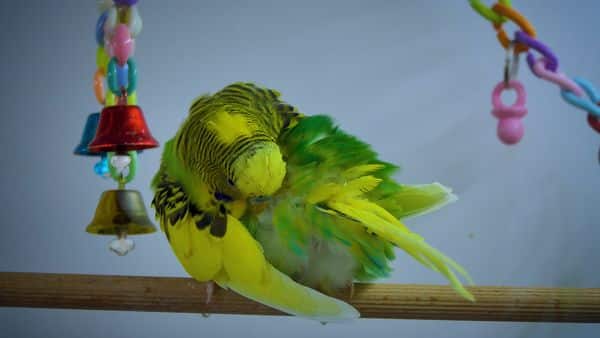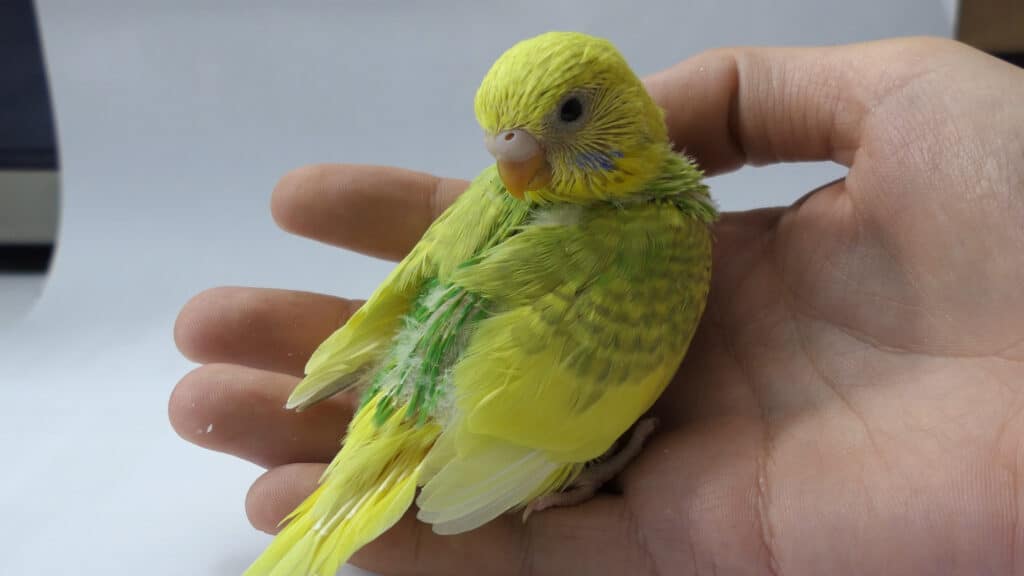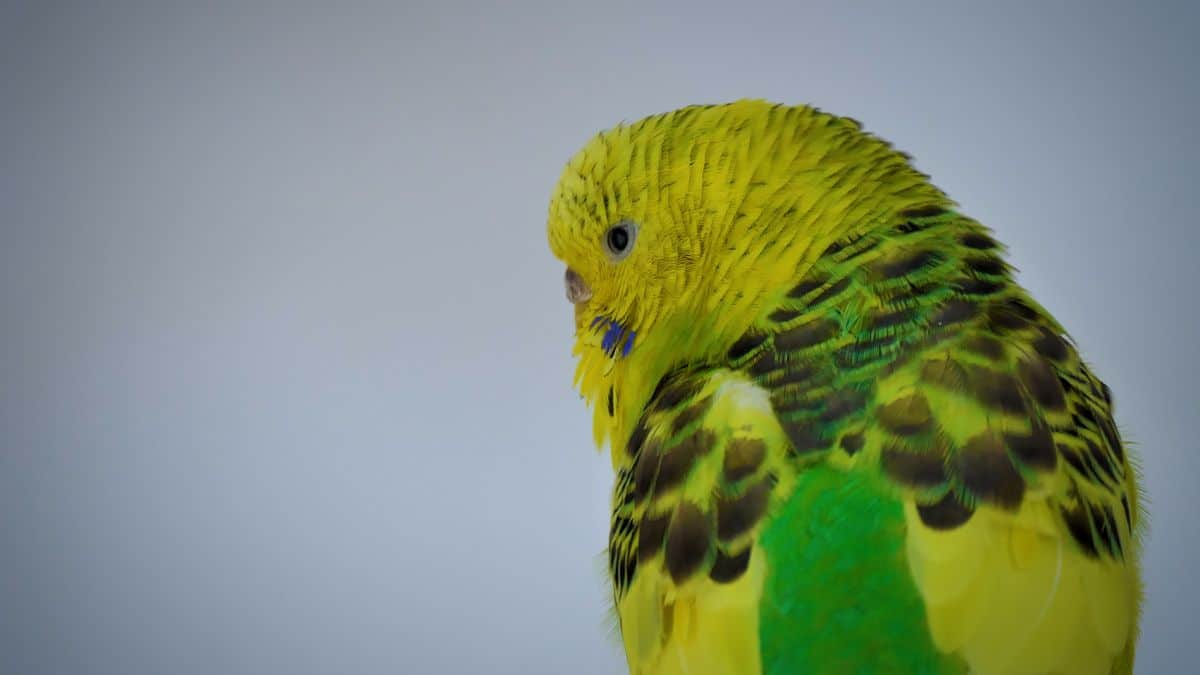Feathers are valuable to budgies. Although you cannot control the growth rate, you can contribute to making the feathers healthy and well distribute on the skin by providing a fortified diet.
Budgies make great companions to people. If you’re a parakeet owner, you’ll admit that these wonderful creatures lighten the mood in your home. You need not to worry if you don’t have it yet. There is still time to get yourself one. Do you know what makes these birds jumpy and happy? Their power to fly. Flight is an important element for budgies.
They take pride in budgie feathers, and without them, they feel useless and unhappy. As a loving keeper, you want to ensure your buddy is joyful and free to move around. Therefore, you and no one else has the responsibility to check on your bird’s welfare and ensure its wings are functional. We’re not telling you to cram all parts of the feathers. That’s insane.
You only have to learn more information about them and do all you can whenever necessary. We understand your dedication to your buddy, and we’re here to help you become a better keeper to your bird. This article will highlight everything you should know about budgie feathers.
Why are feathers important?
Sometimes, understanding the usefulness of something makes you appreciate it. As a good friend, you have to know why your bird values its feathers. Once you have the insight, it’ll be easy for you to do your best in making sure what your budgies appreciate the most is with him. Feathers do the following;
- Regulates temperature
- Prevents overheating and getting too chilled
- Acts as a waterproof when needed
- Offers physical protection
- Useful in communication
- Helps in courtship between male and female
Can you imagine how a budgie’s life will be without feathers? It’ll have a terrible experience and denied a normal lifestyle like that of other parakeets. Seeing how feathers play a big role, let’s get deeper a little bit more.
What do budgie’s feathers look like?
Budgies feathers are made of keratin, the same protein that makes up its skin, beak and toenails. A healthy parakeet will have about 2000-3000 feathers and are categorized into two; vaned and down feathers. Vaned feathers are the ones on the outermost, and appear larger.
They control flight and perform most of the functions. Down feathers are smaller and found underneath them. There is no specific pattern for feathers; they come in different shapes, sizes and colors. But they all have the same layout.

What causes budgies to lose feathers?
Health problems
Feather-related diseases are much easier to spot than bacterial or fungal types. Conditions like feather cyst are noticeable and result in bald patches on the budgie’s skin. If you discover any feather untidiness or abnormal marks on them, that’s a sign of feather ailment. Eventually, your bird will begin to lose its feathers.
The conditions won’t disappear without a surgical approach. Assuming the situation may lead to your budgie remaining with no featherless. And if no serious action is taken by then, more health issues will crop up and may extend to as bad as causing death.
Feathers plucking
This cause can be blamed on three parties: the budgie itself, the owner, or other birds.
Budgie plucking itself
A budgie pulling out its own feathers only means one thing; it has a health problem that has not been discovered. Sadly, it’s nearly impossible to know which of the diseases is to blame. The possible causes are allergy, parasites, inadequate air circulation, stress, mating hormones, cancer, bacterial or fungal infection, poisoning, or just a bad habit that needs to be stopped.
Plucking feathers is harmful to the bird.
As much as your budgie may find it a fun thing to do, or good destruction to its problems, you need to stop it. How do you point out the cause for the bird’s unpleasant plucking behavior? Use the following tactics;
Change toys
A budgie enjoys biting things surrounding him. Plucking his feathers means the stuff in his cage is not satisfying. Change the toys and find him something else to perch and nibble on. If that stops him from pulling off his feathers, then the toys he had was the problem.
Look at your meal program
Changing diet may be the rescue you need. Try giving it new foods and see if there’ll be an improvement.
Stop stroking the budgie on its back or belly
You’re allowed to play with your bird whichever way you want. However, stroking it on the back or belly is a No-go zone if you want the plucking habit to end. The strokes liven the mating hormones, which make the bird begin to pluck himself.
Make bathing a routine
Bathing is important to birds too. Missing to shower will make your bird dry and itchy. When this happens, it’ll try to resist the discomfort by scratching itself or pulling out feathers.
Do a close study
This may require you to sacrifice your time and watch your bird’s behaviour. Find out situations that make it pluck its feathers. Is it when it’s stressed, hungry, angry, lonely, after overeating or when in the company of other birds? It’ll be easy to think of the most appropriate solution after studying the root cause.
Humidity, air and light provision
Ensure the bird gets a balanced environment. Light and humidity should be equitably distributed. You may have to transfer the cage if the current location seems to cause discomfort to your bird.
Unfortunately, discovering the cause doesn’t mean finding the cure. The above diagnosis will only help you know what is making your bird pluck itself. The hardest part is trying to make your budgie detest this habit.

Budgies plucking each other
His cage mates can pluck a budgie, and this can lead to death. The solution to this is separating the victim from the attackers. You’ll have to find the reason that made the guilty bird behave the way it did. Otherwise, it’ll do the same thing to others. You can also add another feeding station to ensure the birds don’t meet at any given time.
You plucking the budgie
Sometimes, you can be hurting your bird unknowingly. If you are used to plucking a feather from your bird, you need to stop. Your intention may be clean, but the impact won’t be. No matter how tempted you are to pull out a feather, don’t give in. Anytime the temptation gets strong, remind yourself that you don’t want a featherless budgie.
Moulting
Most budgie owners are concerned whether it’s normal for a budgie to lose its feathers during moulting. Budgies moult once a year. But some moult every six months or slowly throughout the year. Junior budgies experience a partial moult at the age of 12 weeks. At this time the baby forehead barring is replaced by a white or yellow adult forehead. Some budgies shed off their feathers fast, but regrow new feathers after a few weeks. Others take time. You’ll rarely notice a gap in their feather’s pattern, and it’ll take weeks before they have full feathers on them.
Expect budgies to miss feathers during moulting phase. But the process shouldn’t leave your bird with huge bald spots, that’s an indication there’s an underlying issue which needs a vet’s intervention.
Are there any unique actions needed during moulting?
Moulting greatly affects your budgie as it takes a lot of energy and nutrients from it. Growing new feathers can eat up to 25% of the nutrients your bird is consuming. So, if you want your budgie to have healthy, full and pretty feathers, play your part well. Provide nutritious meals, and ensure the amount is enough. If you do it right, your bird will regrow admirable feathers which you’ll be allowed to take pride in. After all, you partly contributed to the gorgeous look your buddy will acquire after moulting is over.
Is feather bleeding normal?
It’s terrifying to see your healthy bird having a sudden feather bleeding. The good news is that it’s a normal thing during moulting. Certain feathers, known as pin feathers are made of blood vessels. Without them, the bird can’t grow full feathers on its skin. If they are damaged in any way, they’ll bleed just like any other wound. However, extreme bleeding sends a different message.
If you let the situation get worse, your budgie can die. Once you spot the bleeding, you should stop your parakeet from losing much blood. How do you do that? Catch your bird, and hold the wounded part tightly for about 10 minutes. Ensure the pressure is applied to the feather, not the whole body. Squeezing the bird can suffocate it to death. As soon as the bleeding stops, visit a vet to remove the broken pin feather.
Feather’s diseases you should know

Budgie feather duster
This syndrome is genetic. It’s difficult to know it’s a disease as the signs are not so obvious. Budgies with such ailment have feathers that grow in a random direction and continues growing in that way. This growth pattern leaves them with a mop-like appearance. In some occasion, the toenails and beak will have an abnormal length.
The only easy-to-notice side effects of this genetic disorder are that the bird will be unable to walk or fly. Your budgie will become unhappy as it can’t move around or feed itself, and that’ll eventually lead to a weak immune system. The only solution is to give a nutritious diet to strengthen its system. Sadly, individuals with this disorder do not live beyond one year.
Budgies feathers French moult
Such disease causes a budgie’s wings and tail feathers to fall out, denying it flying capabilities. In serious cases, the bird will lose feathers in the whole body. No sure cure is discovered yet. But a vet visit helps in managing the disease.
Heather disease or Psittacine Circovirus Disease (PCD)
With this, feathers fall out abnormally, beak and toenails become distorted. The situation can worsen to the extent of a bird looking naked, with nothing on the skin. Skin sores and blemishes may be present too. This is a tough one because the virus can be transmitted to others through the droppings. To add sadness to the situation, there is no cure for it. This makes it necessary to separate the affected bird from others.

Are dirty feathers harmful to budgies?
All creatures, even birds, are affected with uncleanliness. Dirty feathers will make your bird feel irritated. Budgies can clean themselves as long as you provide a bath. Most times, your bird will have something clogged upon his feathers. Don’t allow it to bath itself if the dirt is fatty, sugary or toxic. The reverse will make it ingest the harmful stuff while bathing, posing a threat to its health.
To remove dirt stuck on feathers without hurting the bird, hold it gently and turn it upside down. Use a wet cloth to wipe the substance on its skin gently. If grease or oil is the dirt in question, you’ll have to use a bird-friendly soap. You can get it from a vet. It’s always advisable to have it in your home in case situations like the one at hand takes place. Rinse the soap thoroughly, making sure none of it enters your budgie’s eyes, cere or mouth. Never use detergents like shampoos or hand soaps. They irritate the bird and can result in serious health issues. For better results, use warm water to do the cleaning.
How soon do budgie’s feathers grow?
Baby budgies come to life completely naked. After 7 days, feathers begin to appear. Within 5 weeks, baby parakeets should be fully feathered. From then, the next feather regrowing will happen during moulting, when the budgie reaches 12 weeks.

Feathers are valuable to budgies.
Feathers are valuable to budgies. Although you cannot control the growth rate, you can contribute to making the feathers healthy and well distribute on the skin by providing a fortified diet. Maintaining a bird’s health is never an easy journey. This makes it necessary to consult a vet as much as possible. If you want your buddy to stay happy and jumpy forever, prioritize its source of power. Feathers matter a lot to them. So, make sure you take it seriously too!
Recent Posts
Have you ever dreamt of personalizing everyday objects or unleashing your creative spirit through precise, detailed engravings? Look no further than the Longer RAY5 20W Laser Engraver, a powerful...
Imagine a world where your imagination can paint pictures. That's the power of artificial intelligence (AI) in the realm of art, and budgies, those vibrant and curious companions, are taking center...


